Horse dandruff, also known as equine seborrhea, is a common issue among horse owners. It can be a source of frustration and concern, but the good news is that there are several effective ways to manage and alleviate this condition. In this article, we will explore the causes of horse dandruff and provide a comprehensive guide on how to get rid of it, ensuring that your horse’s skin and coat remain healthy and radiant.
Understanding Horse Dandruff
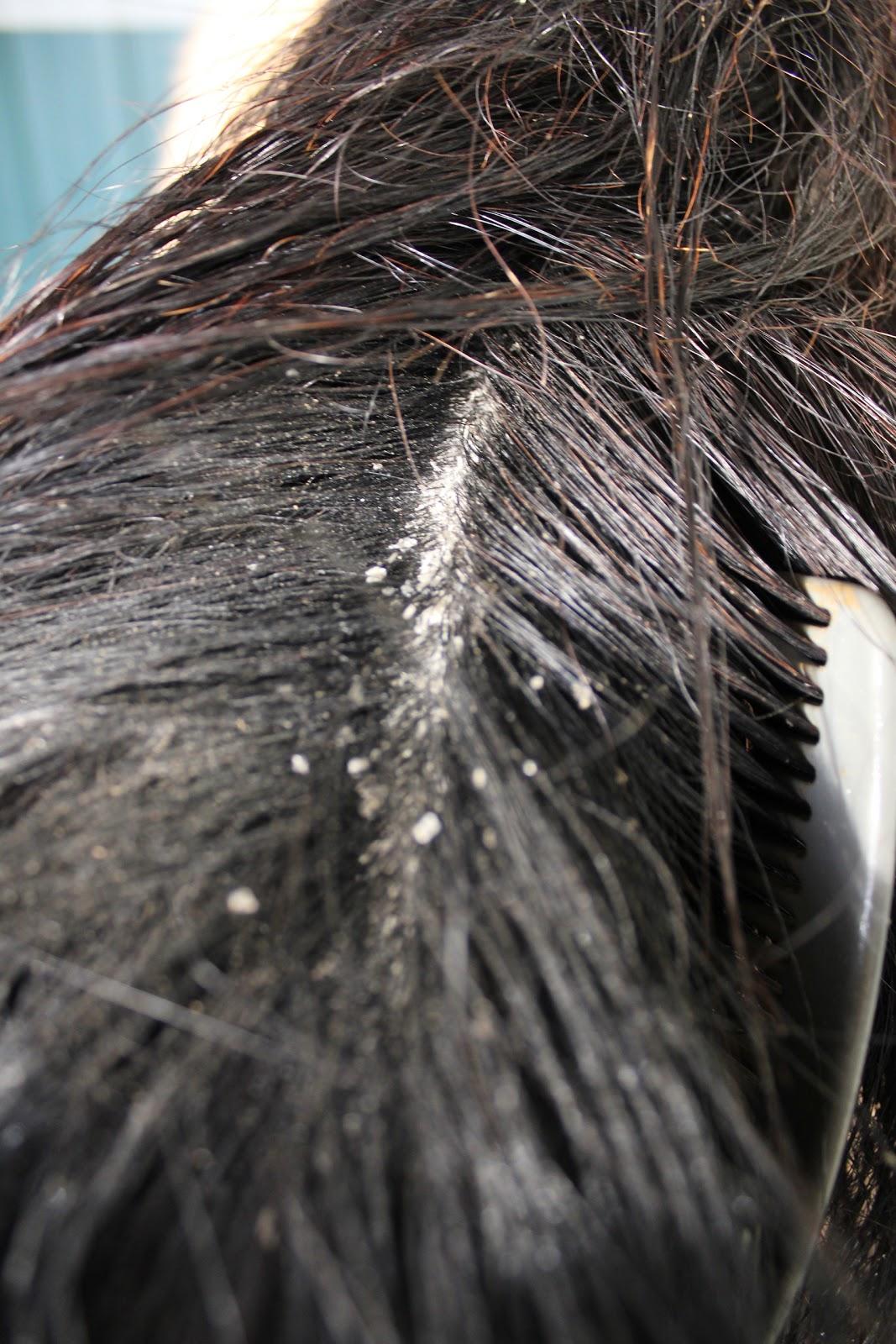
Before delving into the solutions, it’s essential to understand what horse dandruff is and what causes it. Dandruff in horses is characterized by the presence of dry, flaky skin, often accompanied by itching and irritation. This condition can occur due to various factors, including inadequate grooming, dietary deficiencies, skin infections, and environmental stressors.
Causes of Horse Dandruff
1. Poor Grooming: Insufficient grooming practices, such as infrequent brushing and bathing, can lead to the accumulation of dead skin cells and sebum, causing dandruff.
2. Dietary Imbalance: A lack of essential nutrients, particularly omega-3 fatty acids and zinc, in a horse’s diet can contribute to dry, flaky skin and coat issues.
3. Skin Infections: Fungal or bacterial infections, such as dermatitis, can result in dandruff and skin irritation in horses.
4. Environmental Factors: Exposure to harsh weather conditions, such as extreme cold or humidity, can exacerbate skin dryness and lead to dandruff.
Diagnosing Horse Dandruff

Before implementing a treatment plan, it’s crucial to accurately diagnose the presence and underlying cause of dandruff in your horse. Consulting a veterinarian or equine dermatologist is recommended to rule out any underlying health issues and determine the most suitable course of action.
Professional Evaluation
A veterinarian can conduct a thorough examination of your horse’s skin and coat, including skin scrapings and hair analysis, to identify any potential infections, allergies, or nutritional deficiencies contributing to the dandruff.
Diagnostic Tests
Diagnostic tests, such as skin biopsies and allergy testing, may be performed to gain further insight into the specific factors triggering the dandruff in your horse.
Managing Horse Dandruff
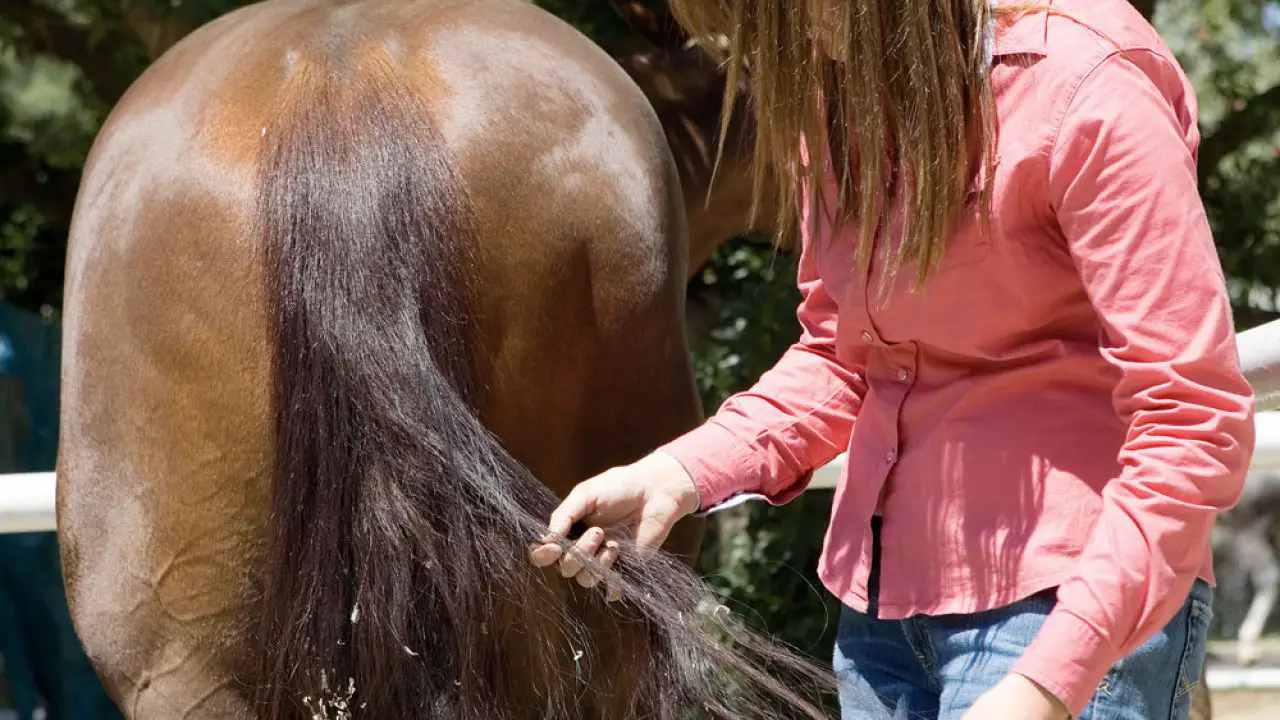
Once the root cause of the dandruff has been identified, a multi-faceted approach can be adopted to effectively manage and alleviate the condition. This approach encompasses grooming practices, dietary adjustments, topical treatments, and environmental modifications.
Optimal Grooming Practices
Regular grooming is essential for maintaining a healthy coat and skin. This includes daily brushing to stimulate oil production and remove dead skin cells, as well as periodic bathing with gentle, moisturizing shampoos to prevent excessive dryness.
Balanced Nutrition
Ensuring that your horse’s diet is rich in essential nutrients, such as omega-3 fatty acids, biotin, and zinc, can significantly improve skin and coat health. Incorporating high-quality forage, supplements, and specialized feeds formulated for skin support can address dietary deficiencies contributing to dandruff.
Topical Treatments
Topical treatments, such as medicated shampoos, conditioners, and emollients, can provide relief from dandruff and soothe irritated skin. These products may contain ingredients like coal tar, salicylic acid, or tea tree oil, known for their anti-inflammatory and antifungal properties.
Environmental Considerations
Creating a conducive environment for your horse, which includes providing adequate shelter from extreme weather, maintaining proper ventilation in stables, and minimizing exposure to allergens, can help prevent exacerbation of dandruff and promote overall skin wellness.
Professional Intervention
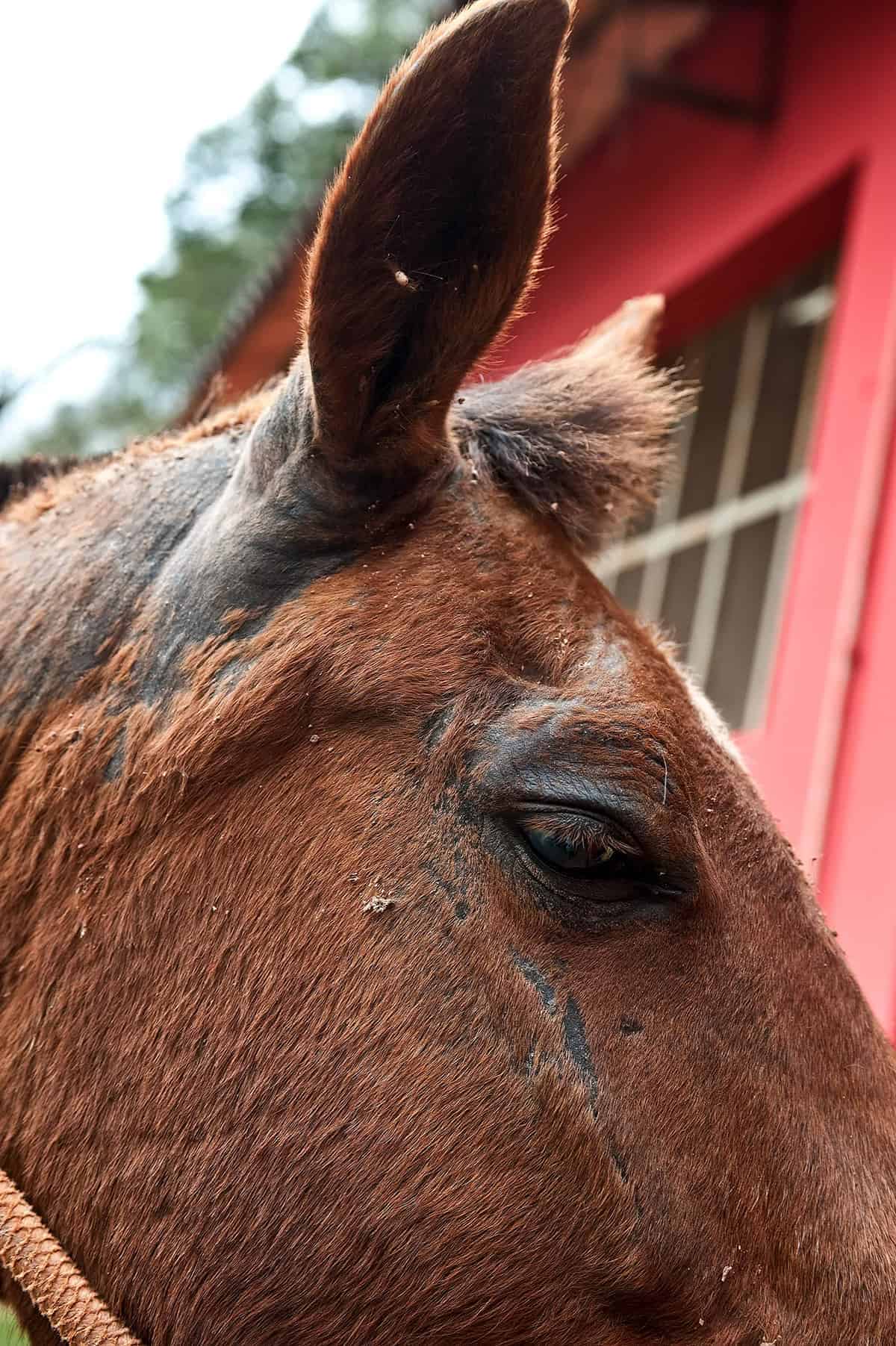
In cases where dandruff persists despite home management efforts, seeking the expertise of a veterinarian or equine dermatologist is crucial. These professionals can offer specialized treatments, such as prescription medications, skin therapies, or allergy desensitization, tailored to address the specific needs of your horse.
Advanced Therapies
Advanced treatments, including phototherapy, laser therapy, and immunomodulatory medications, may be recommended for severe or chronic cases of equine seborrhea, aiming to alleviate symptoms and restore skin health.
Long-Term Maintenance
Developing a long-term maintenance plan in consultation with a veterinary professional is essential to prevent recurrence of dandruff and ensure ongoing skin and coat health for your horse. This may involve periodic check-ups, dietary adjustments, and tailored grooming routines.
Preventive Measures
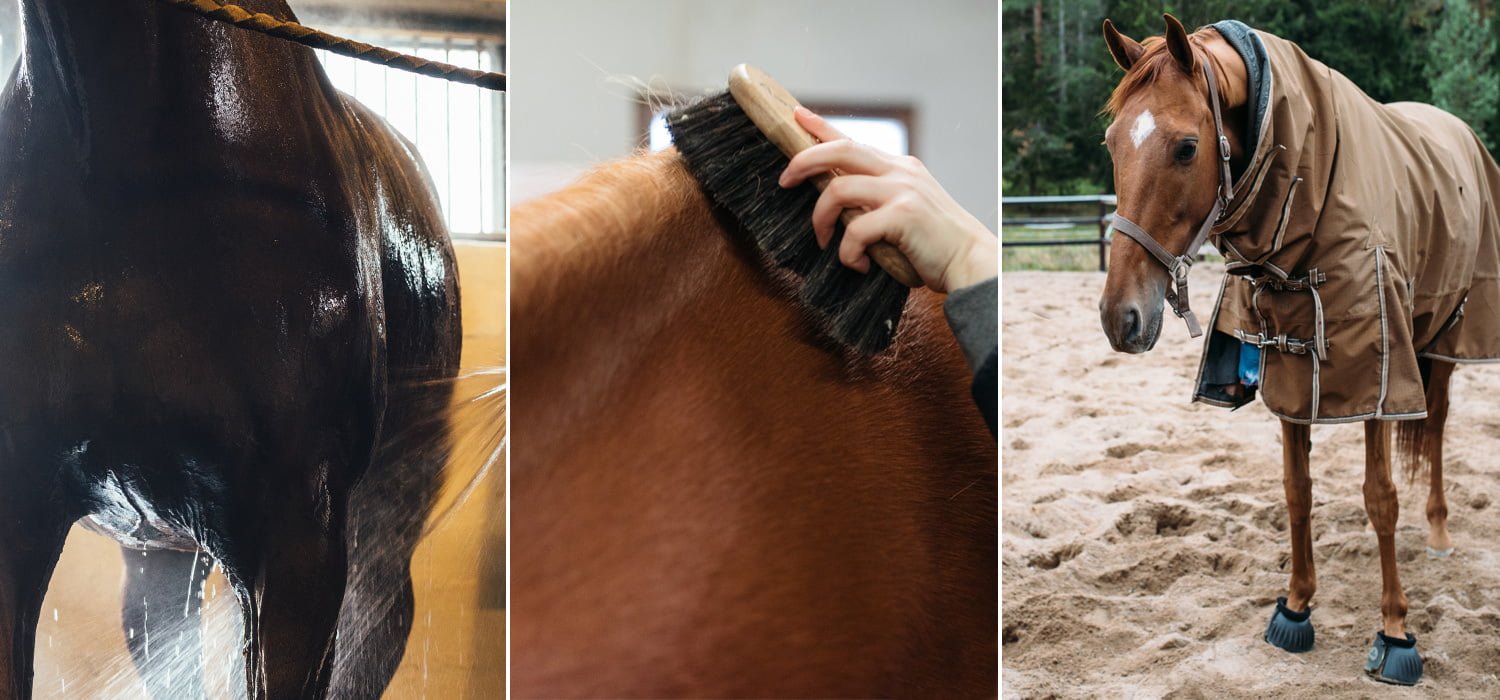
In addition to addressing existing dandruff, taking preventive measures can help minimize the likelihood of recurrence and maintain optimal skin condition in your horse.
Regular Monitoring
Consistently monitoring your horse’s skin and coat for any signs of dandruff, irritation, or abnormalities allows for early intervention and prompt treatment, preventing the condition from worsening.
Quality Grooming Tools
Investing in high-quality grooming tools, such as soft brushes, detanglers, and shedding blades, can facilitate effective grooming without causing skin irritation or exacerbating dandruff.
Environmental Management
Implementing environmental modifications, such as dust control in stables, provision of clean bedding, and regular stable cleaning, can create a healthier living space for your horse, reducing the risk of skin issues.
Routine Veterinary Care
Scheduling routine veterinary check-ups, including skin assessments and nutritional evaluations, ensures proactive management of your horse’s overall health and early detection of any potential dandruff triggers.
Dealing with horse-related issues? Whether it’s disposing of horse manure, getting rid of fleas on horses, or eliminating wind puffs, our articles on disposing of horse manure, getting rid of fleas on horses, and getting rid of wind puffs on horses can provide valuable insights. And if you’re also concerned about horse dandruff, be sure to check out our comprehensive guide on how to get rid of horse dandruff for effective solutions.
Conclusion
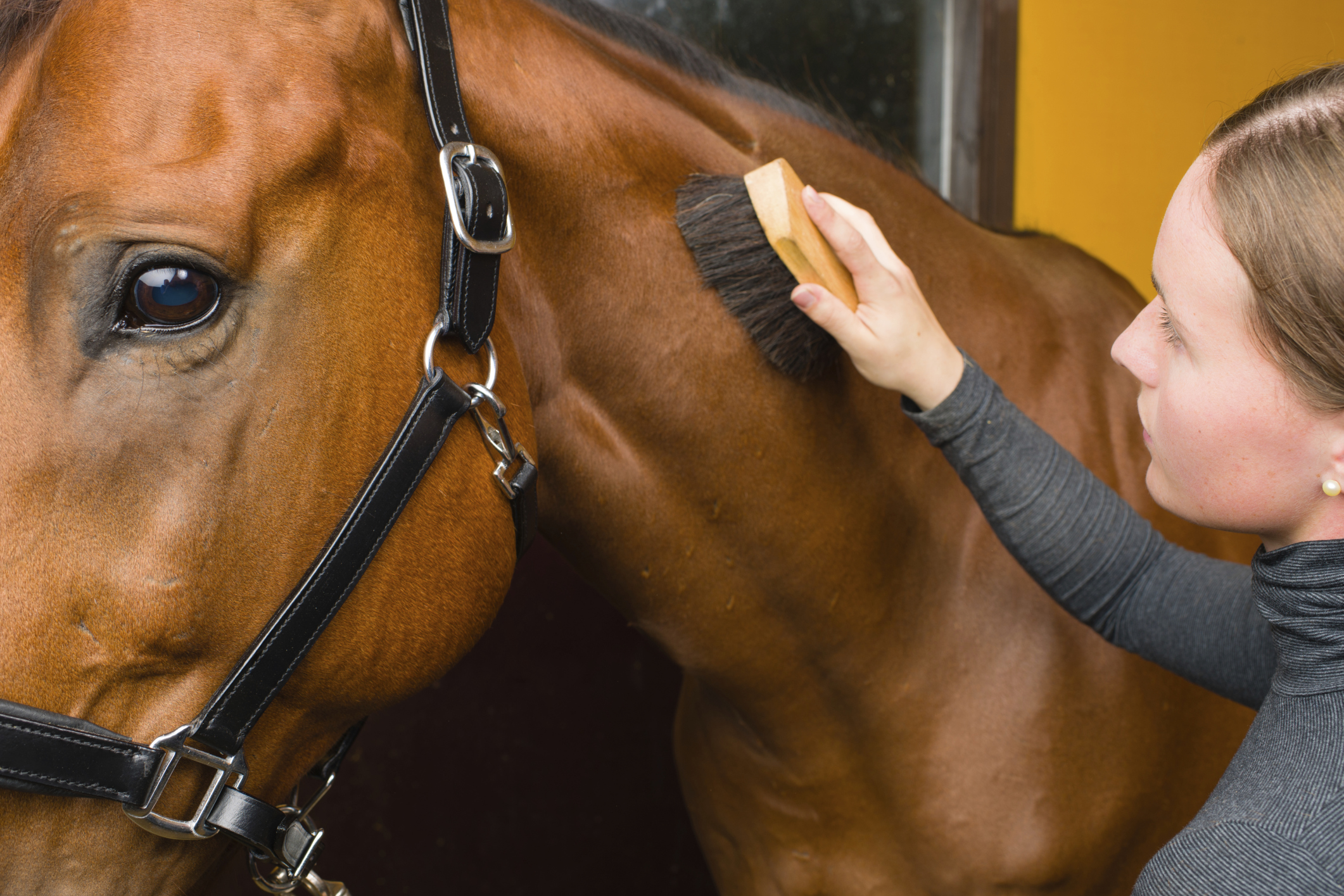
In conclusion, horse dandruff is a manageable condition that requires a comprehensive approach encompassing grooming, nutrition, topical treatments, and environmental considerations. By understanding the causes, implementing effective management strategies, and seeking professional guidance when necessary, you can effectively alleviate dandruff in your horse and promote long-term skin and coat health. Remember that each horse is unique, and personalized care tailored to their specific needs is essential in achieving optimal results. With the right care and attention, you can ensure that your horse maintains a lustrous, dandruff-free coat and enjoys optimal skin wellness.



